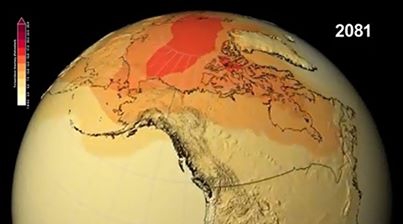Climate Models Show Potential 21st Century Temperature, Precipitation Changes
New data visualizations from the NASA Center for Climate Simulation and NASA's Scientific Visualization Studio at Goddard Space Flight Center, Greenbelt, Md., show how climate models used in the new report from the United Nations' Intergovernmental Panel on Climate Change (IPCC) estimate possible temperature and precipitation pattern changes throughout the 21st century.
For the IPCC's Physical Science Basis and Summary for Policymakers reports, scientists referenced an international climate modeling effort to study how the Earth might respond to four different scenarios of carbon dioxide and other greenhouse gas emissions throughout the 21st century. The Summary for Policymakers, the first official piece of the group's Fifth Assessment Report, was released Fri., Sept. 27.
This modeling effort, called the Coupled Model Intercomparison Project Phase 5 (CMIP5), includes dozens of climate models from institutions around the world, including from NASA's Goddard Institute for Space Studies.
To produce visualizations that show temperature and precipitation changes similar to those included in the IPCC report, the NASA Center for Climate Simulation calculated average temperature and precipitation changes from models that ran the four different emissions scenarios. The final products are visual representations of how much temperature and precipitation patterns would change through 2100 compared to the historical average from the end of the 20th century.
The changes shown in these maps compare an average of the model projections to the average temperature and precipitation benchmarks observed from 1971-2000. This baseline is slightly different from the baseline used in the IPCC report, which was 1986-2005. Because the reference period from 1986-2005 was slightly warmer than 1971-2000, the visualizations are slightly different than those in the report, even though the same model data is used.
Related Links
› Climate Models Project 21st Century Temperature Changes › Climate Models Project 21st Century Precipitation Changes › Climate Models Project 21st Century Temperature and Precipitation Changes (on a globe)
A découvrir aussi
- Une prédiction très troublante
- Les enseignements du très important discours de Vladimir Poutine
- Le but de Daech était de ne laisser aucune fille vierge

